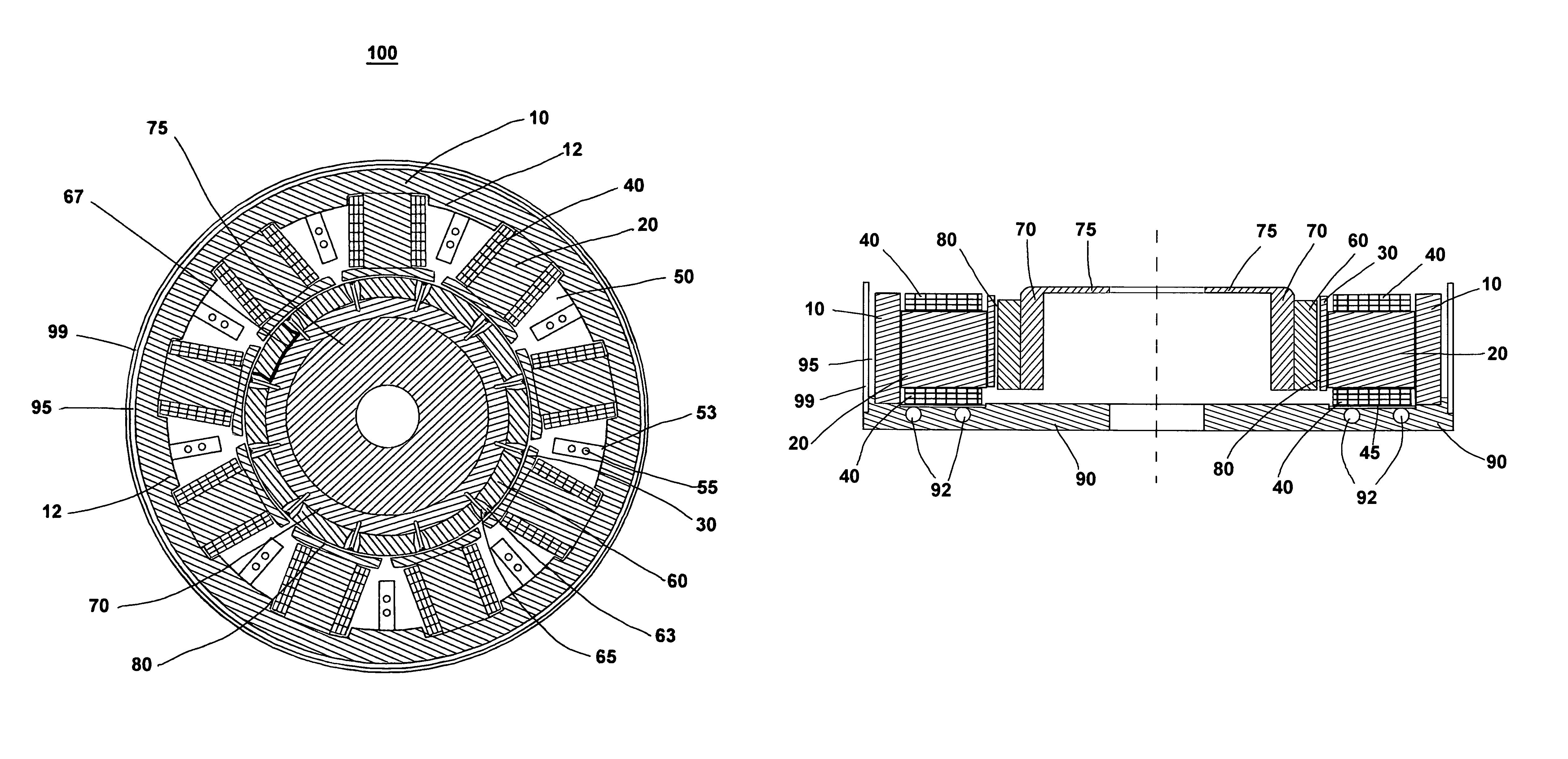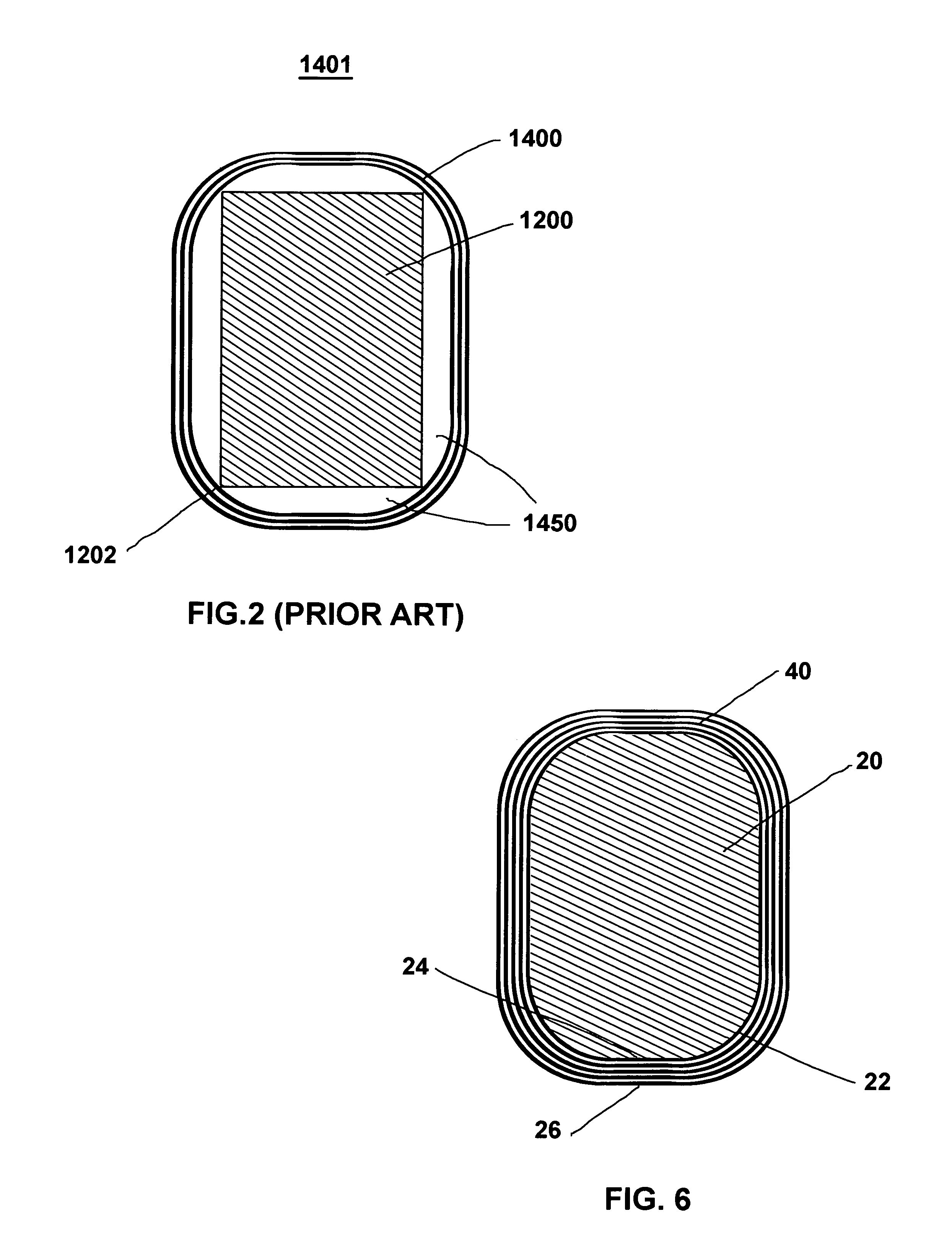Radial flux permanent magnet AC motor/generator
a permanent magnet ac motor and radial flux technology, applied in the direction of windings, magnetic circuit rotating parts, magnetic circuit shapes/forms/construction, etc., can solve the problems of low peak power density of motors, heavy and unresponsive, and difficult control of speed, so as to achieve high power density, light weight, and efficient
- Summary
- Abstract
- Description
- Claims
- Application Information
AI Technical Summary
Benefits of technology
Problems solved by technology
Method used
Image
Examples
Embodiment Construction
[0028]Referring now generally to FIGS. 3-8, there is shown the stator and rotor assemblies of a motor / generator 100 in accordance with the present invention. Referring more specifically to FIG. 3, there is shown a stator flux ring 10, constructed of powder metal, a plurality of separate powder metal cores 20 wound as individual electromagnets and positioned immediately adjacent to and in contact with the stator flux ring 10, and a like plurality of shoes 30 also constructed of powder metal to diffuse the magnetic flux field produced by each of the electromagnets. The powder metal stator flux ring 10, powder metal cores 20, and powder metal shoes 30 are not fabricated as a single component, as in the case of prior art motor 1000 of FIG. 1, but as separate components to facilitate their manufacture using molds and presses and to facilitate machine winding of the cores 20 to form electromagnets. The stator flux ring 10 provides a path for the magnetic flux field between the electromagn...
PUM
 Login to View More
Login to View More Abstract
Description
Claims
Application Information
 Login to View More
Login to View More - R&D
- Intellectual Property
- Life Sciences
- Materials
- Tech Scout
- Unparalleled Data Quality
- Higher Quality Content
- 60% Fewer Hallucinations
Browse by: Latest US Patents, China's latest patents, Technical Efficacy Thesaurus, Application Domain, Technology Topic, Popular Technical Reports.
© 2025 PatSnap. All rights reserved.Legal|Privacy policy|Modern Slavery Act Transparency Statement|Sitemap|About US| Contact US: help@patsnap.com



